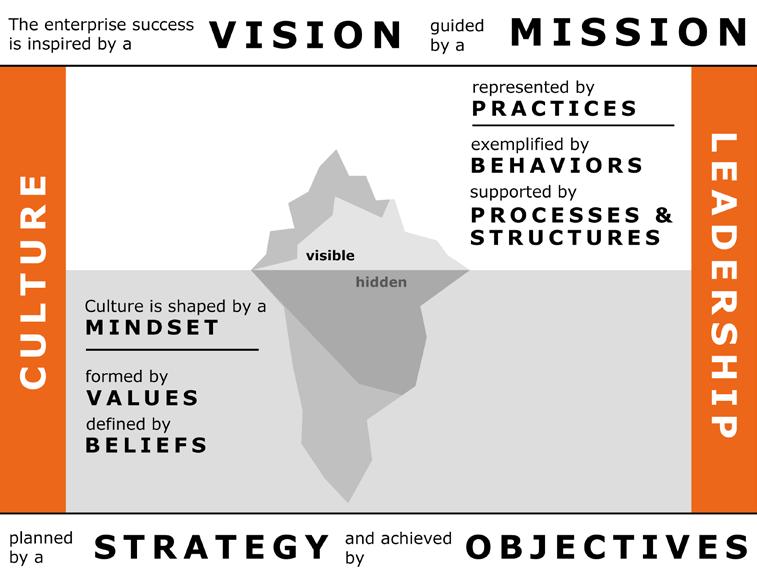

TO CHANGE THE GAME, WE NEED TO CHANGE THE RULES!

To change the game, we need



TO CHANGE THE GAME, WE NEED TO CHANGE THE RULES!

To change the game, we need
In today’s world marked by unpredictability and continuous change, organizations face constant challenges. Global disruptions – such as wars, natural disasters, political instability and, more recently, deliberate attacks on vital infrastructure – coupled with fierce global competition, have taken the veil off the volatile, uncertain, complex, and ambiguous (VUCA) environment that businesses have to navigate. This scenario, in which customers also switch loyalty easily in pursuit of the best value per dollar, puts immense pressure on companies with capital-intensive inventories and a dependence on global supply chains. These conditions require a strategic pivot towards resilience and adaptability, particularly for industries that rely on precise logistics, such as graphite electrodes and steel production. Facing these challenges head-on, and navigating the turbulent waters that come with them, highlights the need for robust contingency planning and flexible operating models to ensure stable and reliable supply chains. This is even more true for the so-called ‘traditional companies’. Entities that have long been established within their markets, have profound industry knowledge, and have implemented solid structures and processes. In the new global environment, it is these companies to whom resilience is not just beneficial but essential for healthy growth and future success. At the same time, it is these companies that are struggling the most in delivering a successful transformation.
Their once-effective organizational structures, decision-making hierarchies, and legacy systems now hinder agility, resilience, and overall organizational excellence in today’s VUCA world. A transformation geared towards success is an in-depth, systemic re-orientation of the entire enterprise. It challenges and changes the foundational, often unspoken rules, beliefs, and paradigms that heavily influence perceptions, behaviors, decision-making, and interactions. In this effort, mere incremental efforts and increased hard work cannot address the need for change sufficiently.

After all, a transformation aims to fundamentally change the way a company does business.
Think Fosbury Flop in high jump: Before the 1968 Olympics, high jumpers typically used and improved upon techniques that all shared going over the bar face-down.
Dick Fosbury, however, ran towards the bar in a curve, then leaped backward and head-first, allowing for a significantly higher jump and an unrivaled competitive advantage over conventional methods. By overcoming the belief that you need to run straight and jump forward, he changed the entire game. As a paradigm, this belief was almost considered a rule in high jumping, determining the sport like the hidden part of an iceberg determines the visible one.

When talking about transformation, it is this level of paradigm shift that should be the North Star.
In general, the success rate of transformation initiatives is very low and most efforts fizzle out during implementation. The authors, with their broad experience and expertise across multiple industries, have seen many initiatives come and go again very quickly. So-called ‘traditional companies’ are especially prone to failure in their transformation attempts. These organizations face unique challenges and hurdles when attempting to navigate the complexities of a transformation. Symptoms of these difficulties include, but are not limited to, the following:
• Resistance to Change: The success of transformations is hindered by employees’ and management’s reluctance to adopt new practices, leading to skepticism and disengagement.
• Traditionalist Culture: Deeply ingrained cultures that value stability and predictability in traditional companies can conflict with the adaptability needed for successful transformation.
• Legacy Systems and Locally Optimized Processes: Traditional companies’ reliance on outdated systems optimized for siloed functions complicates updating efforts. These require a holistic reenvisioning of processes and structures fitting end-to-end perspectives.
• Lack of Agility: Traditional companies struggle with responsiveness due to hierarchical decision-making and bureaucratic processes in a rapidly changing business environment.
• Insufficient Skills and Capabilities: Traditional companies often lack the skills necessary for transformation, including digital literacy, innovation, agility, and project management.
• Poor Alignment and Communication: Often, these companies face a disconnect between strategic objectives and their execution, along with issues in cross-hierarchical communication.
• Underestimating Transformation Complexity: Underestimating the complexities and interdependencies in transformations leads to inadequate planning and resource allocation. These symptoms make the transformation complicated and multifaceted. It is undoubtedly challenging, presents numerous challenges on several levels simultaneously, and requires a significant effort from every single part and member of the organization.
It is in view of these basic challenges that most transformations start to fail: C-level executives have announced their vision and provided resources, focusing on surface-level items like changing technologies, behaviors, processes, and structures. They then delegate the execution of change but do not address the unspoken and often invisible rulesthe beliefs - of the organization. In highjump terms: Executives continue running toward the bar in a straight line, jumping forward, but expect the company to do a Fosbury Flop. No wonder it fails.
It is clear: If you want to change the game successfully, you need to fundamentally change the rules. The ‘iceberg model’ connects the surface level of observable behaviors, practices, processes, and structures with the underlying rules in the form of beliefs, values, and mindsets that are hidden from plain sight. They, however, determine every other of the visible aspects of an organization. This means leaders need to change first. Before anything else, it is their responsibility to enable themselves to create the new culture and embody it. They have to understand what beliefs and values need to be changed and define what the new paradigms are. These, along with a new vision, then need to be embedded in a compelling story so that management and the rest of the organization are deeply willing to adopt the new mindset needed for transformation and future success. Designing a vivid picture of potential futures and pointing out individual benefits excites people and helps turn concerns and apprehensions into ambitions, motivating employees to embark on the transformative path.

The transformation, however, requires more than just desire. It can only be successful if desire, capability, and permission, the three dimensions of the ‘triangle of transformation’, are synchronized and in balance. Capability means that people not only want to but also possess the individual skills to operate in the transformed organization. Methodologies, knowhow, and practical capabilities to drive and sustain the change need to be built within the company across all levels, from the leadership team to the frontliners. Specific trainings that follow accepted standards and are tailored to the needs of a transformed organization need to be conducted. A potential that is created this way then needs permission to act to be unlocked. Therefore, decisions need to be enabled and taken at the right level. A fitting operating model and the right set of KPIs that are aligned throughout the company guide the creation of supportive structures and processes.
During the transformation, ensuring symmetry between desire, capability, and permission as well as exemplifying the new values, beliefs, and mindset is paramount and a continuous effort of leadership. Only then can the enterprise succeed. In other words: Only when C-level leaders run to the bar in a curve, turn and jump, can they expect the company’s body to provide the energy and the complex motion needed to do a Fosbury Flop, get over the bar, and land the right way.
In 2024, UMS Consulting GmbH & Co. KG celebrates 40 years of successfully supporting organizations in setting up and implementing change towards resilience. We have built extensive expertise in understanding and navigating the complexities and challenges of transformations in the segment of heavy and process industries and are happy to share it. Our holistic Transformation to Excellence program bundles this wealth of experience and offers it as a comprehensive service, ensuring your people and organization are energized for the future.

Frank Oliver Rill Senior Partner
Frank.Oliver.Rill@ums-gmbh.com

Renata Meran Senior Manager
Reneta.Meran@ums-gmbh.com

Dr. Sebastian Bondzio Senior Consultant
Sebastian.Bondzio@ums-gmbh.com

UMS GmbH & Co. KG
Hanauer Landstraße 291B D - 60314 Frankfurt am Main Germany contact@ums@ums-gmbh.com T: +49 69 91 30 680